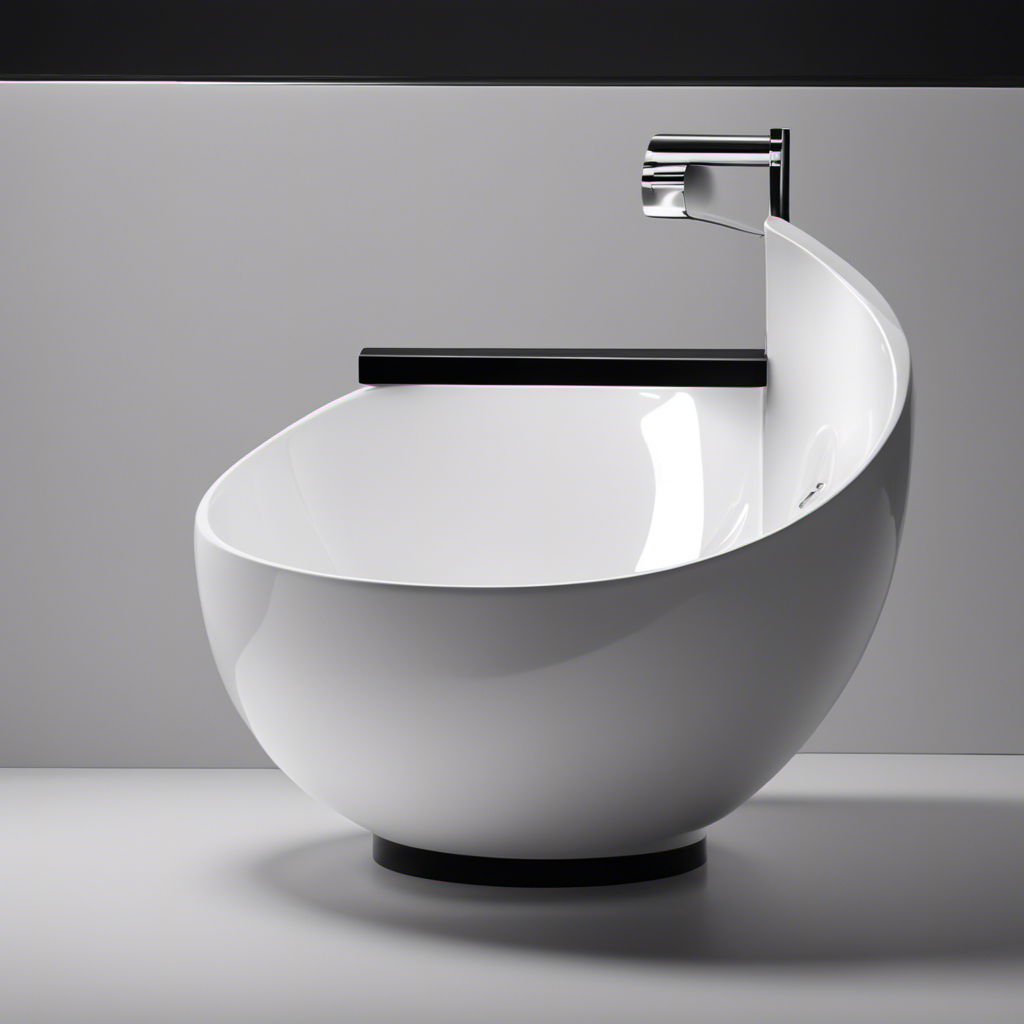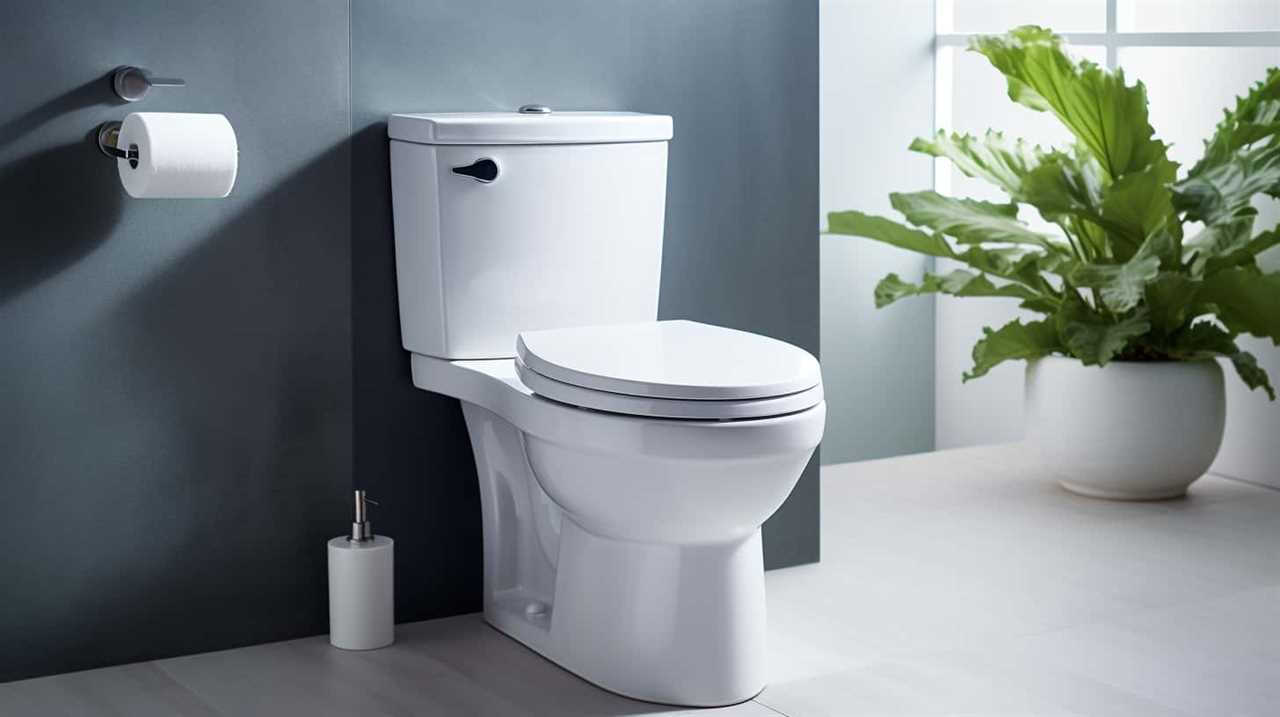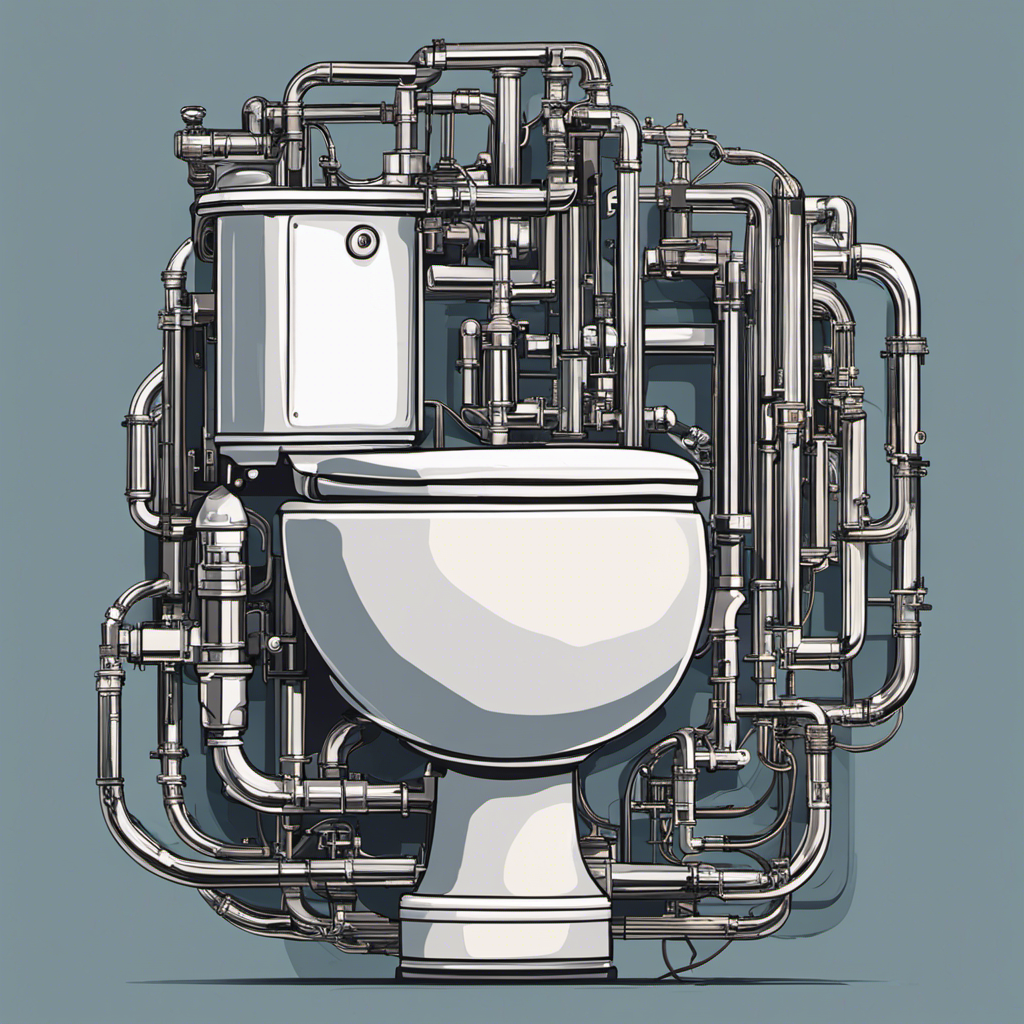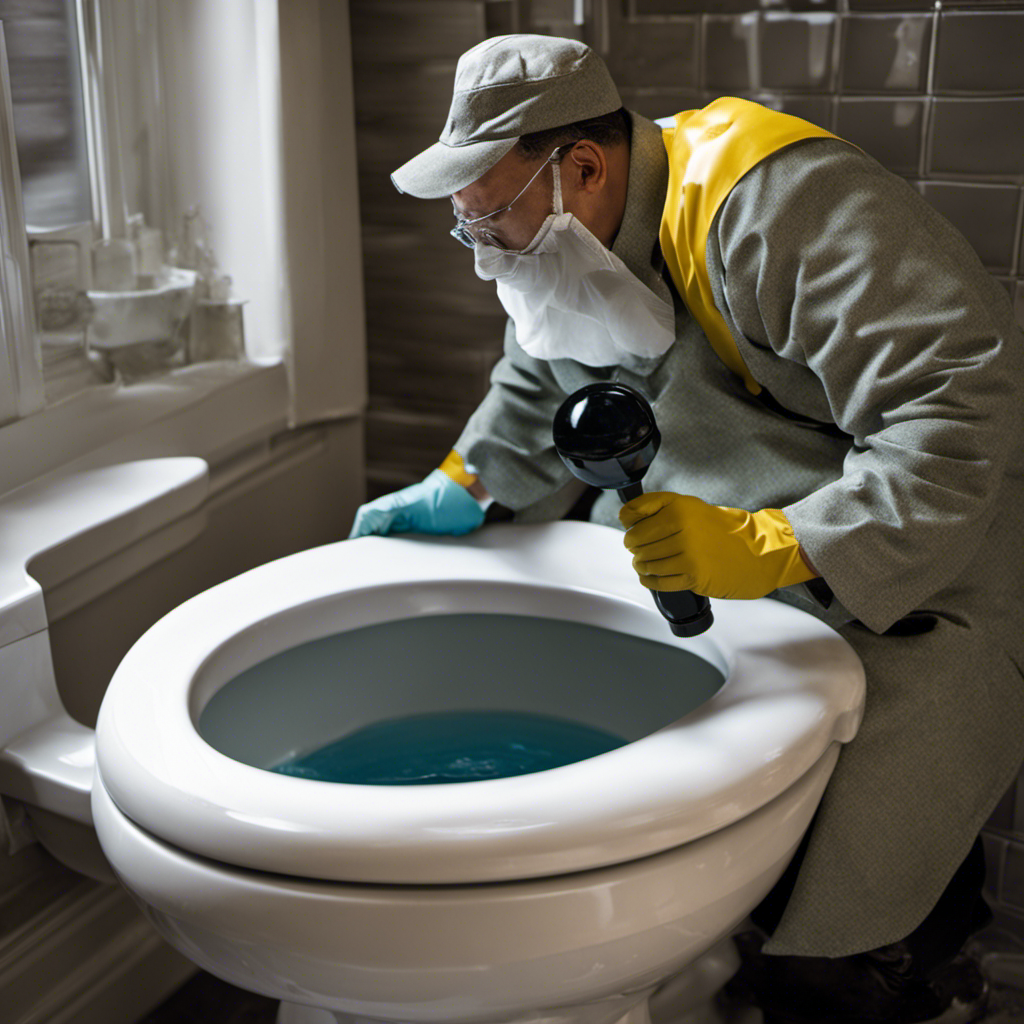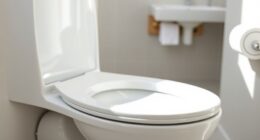I can’t stand it when I see that dreaded black ring in my toilet bowl. It’s like a never-ending battle to keep my bathroom clean.
But have you ever wondered what causes that pesky black ring? Well, let me tell you, there are a few common culprits.
Mineral deposits and hard water buildup can leave behind unsightly stains. Mold and mildew love to thrive in the moist environment of a toilet bowl. And don’t forget about bacterial growth and biofilm formation.
In this article, we’ll dive deep into the causes and potential health risks of those black rings. So, buckle up and get ready to tackle this toilet bowl mystery head-on.
Key Takeaways
- Growth of mold and mildew is one of the main causes of black rings in toilet bowls.
- Mineral deposits and hard water buildup can also contribute to the formation of black rings.
- Lack of regular cleaning and maintenance can lead to the development of black rings in toilet bowls.
- Insufficient bathroom ventilation can create a conducive environment for mold, mildew, and bacterial growth, resulting in black rings.
Common Causes of Black Rings in Toilet Bowls
One of the most common causes of black rings in toilet bowls is the growth of mold and mildew. These unsightly black rings can be quite stubborn to remove, but there are effective cleaning methods that can help tackle the problem.
First, it’s important to wear gloves and use a toilet bowl cleaner specifically designed to remove mold and mildew. Scrub the affected area with a toilet brush, paying special attention to the edges and under the rim. For stubborn stains, you may need to let the cleaner sit for a while before scrubbing.
To prevent the formation of black rings, make sure to regularly clean your toilet bowl and keep the bathroom well-ventilated to discourage mold and mildew growth.
Transitioning to the next section, another common cause of black rings in toilet bowls is mineral deposits and hard water buildup.
Mineral Deposits and Hard Water Buildup
Mineral deposits and hard water buildup can create a dark circular stain in the toilet. These stains not only make the toilet bowl look unclean, but they can also be difficult to remove.
To maintain toilet bowl cleanliness, it is important to regularly clean and remove these stains. There are various cleaning products available in the market that are specifically designed to tackle mineral deposits and hard water buildup. These products contain powerful ingredients that can effectively break down and remove the stains, leaving your toilet bowl sparkling clean.
It’s essential to follow the instructions on the cleaning products and use them as directed to achieve the best results. Taking proper care of your toilet bowl will not only keep it clean but also prevent the growth of mold and mildew, which we will discuss in the next section.
Mold and Mildew Growth in the Toilet Bowl
Regular cleaning and proper maintenance can help prevent the growth of mold and mildew in the toilet. Mold and mildew thrive in moist and dark environments, making the toilet bowl an ideal breeding ground. To avoid unsightly toilet bowl stains caused by these microorganisms, it is important to incorporate effective cleaning techniques.
Firstly, it is crucial to regularly clean the toilet bowl using a toilet brush and a disinfectant cleaner. Scrubbing the bowl thoroughly will remove any existing mold and mildew and prevent their growth. Additionally, it is recommended to flush the toilet after each use to reduce moisture accumulation.
Furthermore, proper ventilation in the bathroom is essential to prevent mold and mildew growth. Ensure that the bathroom is well-ventilated by opening windows or using a fan to circulate air and reduce humidity.
Lastly, consider using a mold and mildew inhibitor product specifically designed for toilets. These products can help prevent the growth of mold and mildew between cleanings.
Bacterial Growth and Biofilm Formation
To prevent bacterial growth and biofilm formation in your toilet, it’s important to regularly clean and disinfect all surfaces, including the rim and under the seat.
Bacterial contamination in the toilet can lead to unpleasant odors and potential health risks. The warm and moist environment of the toilet bowl provides the perfect breeding ground for bacteria to thrive.
Biofilm, a slimy layer formed by bacteria, can accumulate on the surfaces over time, making it even harder to remove.
To effectively clean your toilet and eliminate bacterial contamination, start by using a toilet brush and a disinfectant cleaner. Scrub all surfaces, paying special attention to the rim and under the seat.
After cleaning, flush the toilet to remove any residue.
Regular cleaning using these methods will help keep your toilet clean, fresh, and free from harmful bacteria.
Possible Health Risks Associated With Black Rings in Toilet Bowls
The presence of dark circles in the toilet can pose potential health risks, so it’s important to address this issue promptly.
Black rings in toilet bowls are not only unsightly, but they can also have negative effects on our health. These dark circles are often caused by the buildup of bacteria and other microorganisms, which thrive in the moist and warm environment of the toilet bowl.
When left uncleaned, these bacteria can multiply and potentially lead to infections or illnesses.
To prevent these health risks, it is crucial to regularly clean and disinfect the toilet bowl using appropriate cleaning methods. Scrubbing the bowl with a toilet brush and using disinfectant cleaners can help eliminate the bacteria and maintain a clean and hygienic toilet.
Frequently Asked Questions
How Can I Prevent the Formation of Black Rings in My Toilet Bowl?
To prevent black rings in my toilet bowl, I use effective cleaning methods. Regular toilet bowl cleaning, including scrubbing with a toilet brush and using a cleaning solution, helps keep the bowl clean and free from black rings.
Can Black Rings in the Toilet Bowl Be Harmful to My Health?
Black rings in the toilet bowl may not be harmful to health, but they can be caused by a buildup of bacteria and mold. Regular cleaning is important to prevent any potential health risks.
Are There Any Home Remedies to Remove Black Rings From the Toilet Bowl?
There are several effective home remedies for removing black rings from the toilet bowl. Natural cleaners, such as vinegar and baking soda, can be used to scrub away these stubborn stains.
Can Using Certain Cleaning Products Contribute to the Formation of Black Rings?
Using certain cleaning products can contribute to the formation of black rings in the toilet bowl. It is important to be mindful of the chemicals and ingredients in these products. There are alternative cleaning methods and solutions available to prevent black rings.
Is It Possible for Black Rings in the Toilet Bowl to Come Back Even After Cleaning Them?
Yes, black rings can reappear in the toilet bowl even after cleaning. This can be due to factors like mineral deposits, mold growth, or incomplete cleaning. Regular deep cleaning and using effective cleaning methods can help prevent their recurrence.
Conclusion
In conclusion, black rings in toilet bowls can be caused by mineral deposits, mold and mildew growth, and bacterial growth.
These unsightly rings not only affect the appearance of your bathroom, but they can also pose possible health risks.
It is important to regularly clean and maintain your toilet to prevent these issues. By being proactive and taking the necessary steps, you can ensure a clean and healthy bathroom environment.
So don’t let those black rings linger, take action and keep your toilet bowl sparkling clean!
